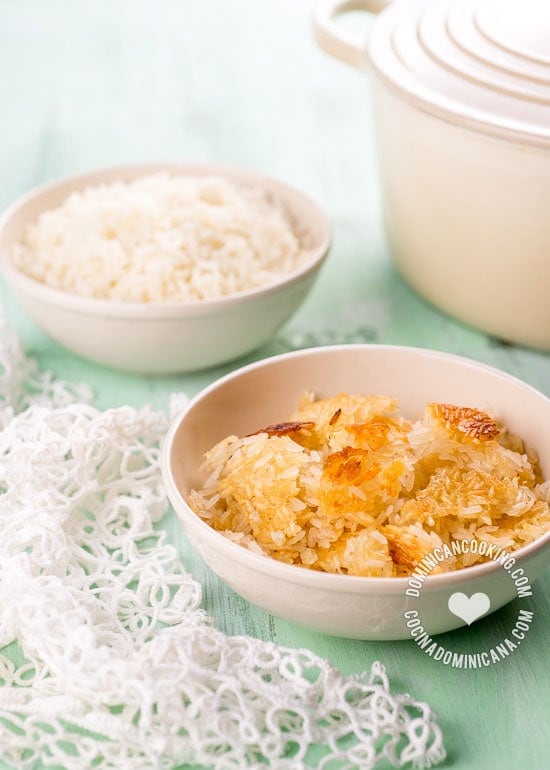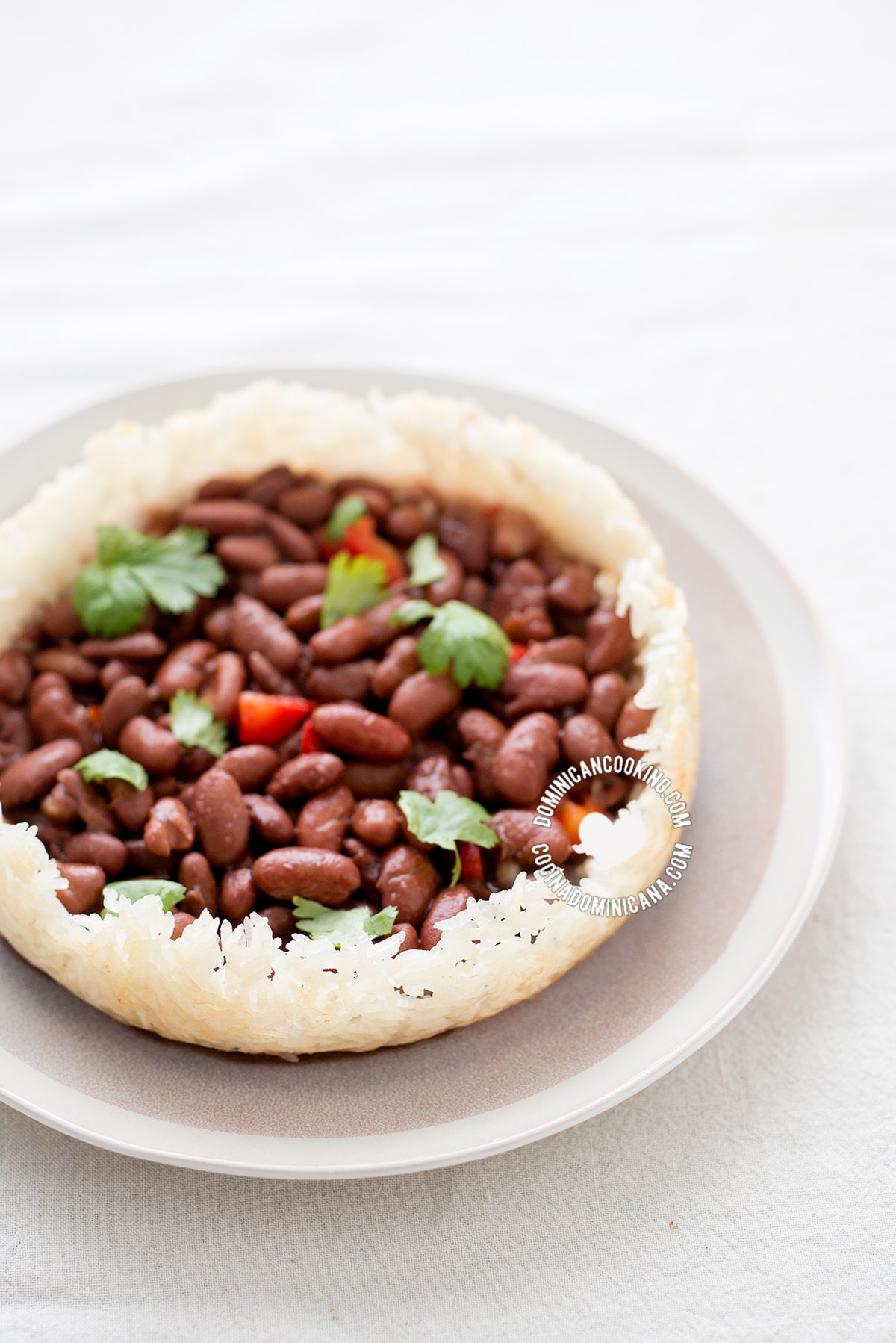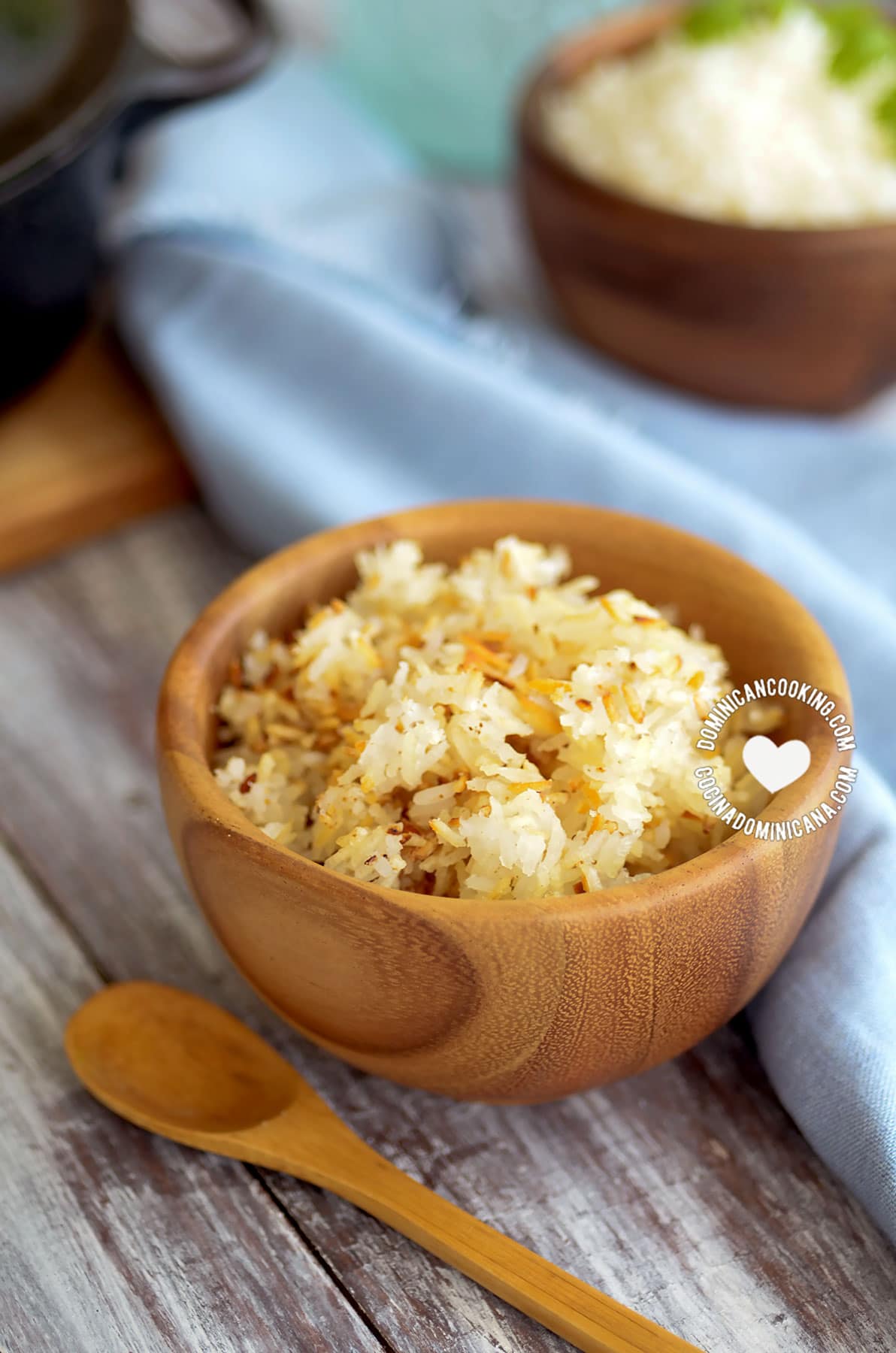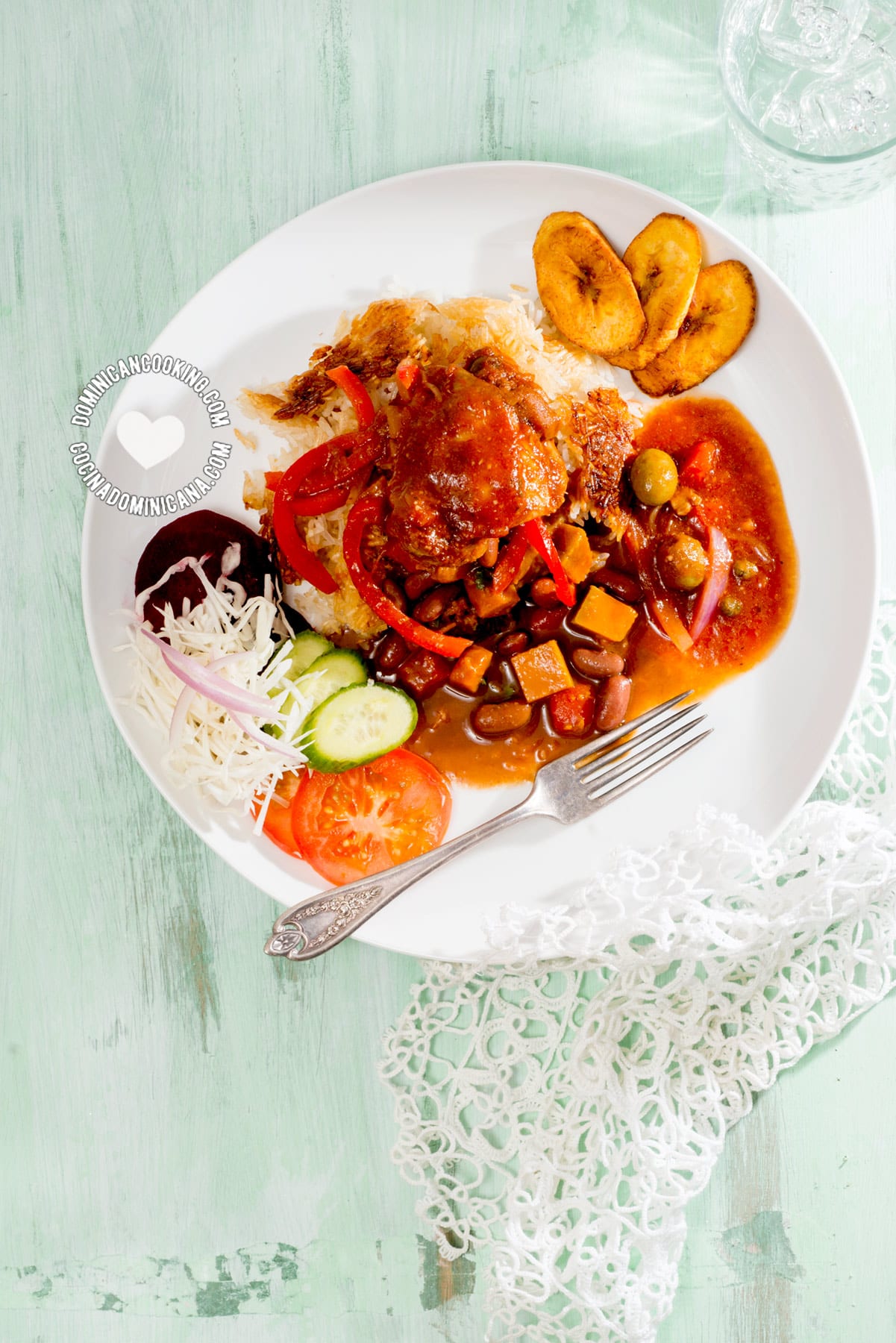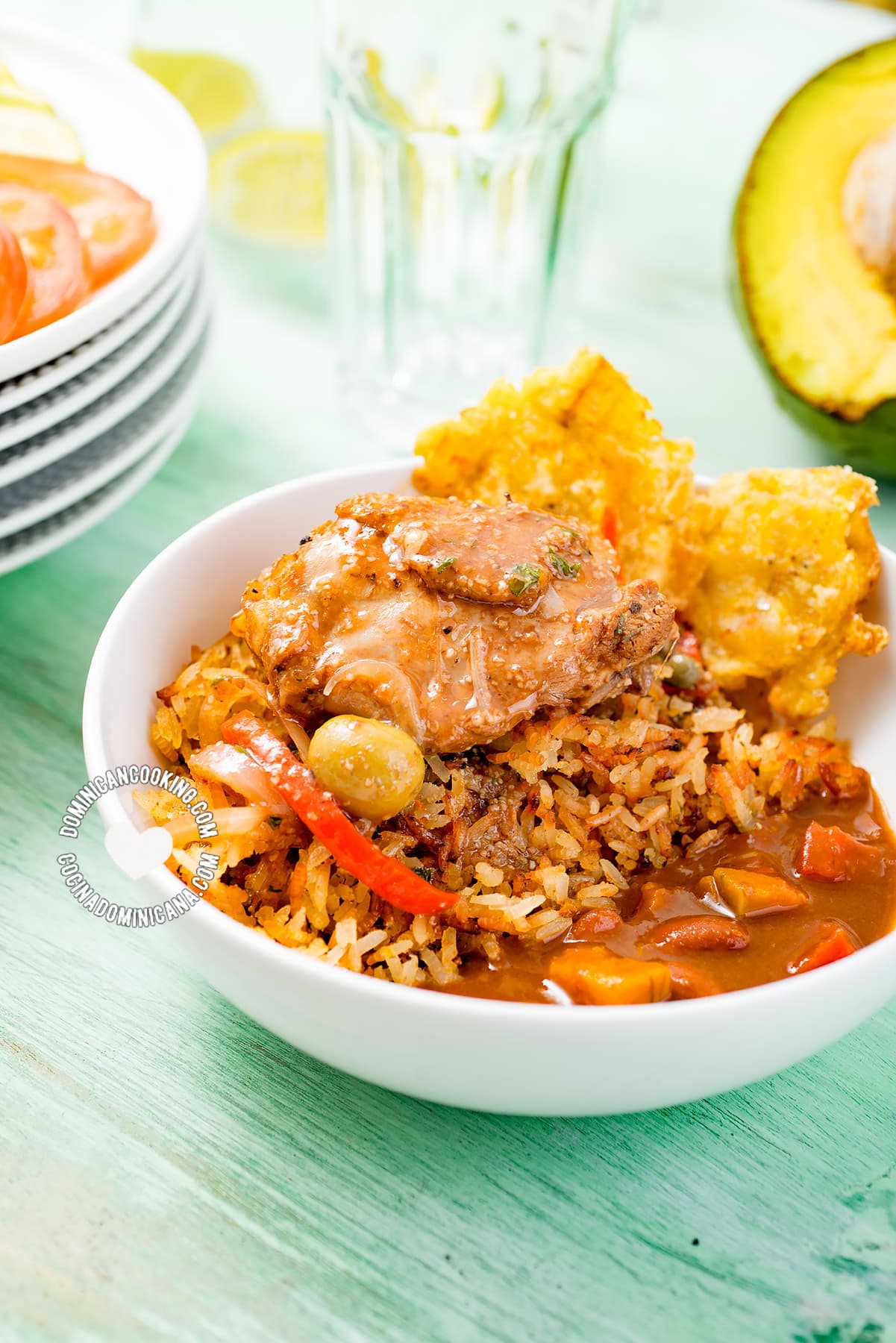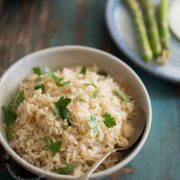To tell you about the secrets of the perfect concón first let’s start with what Dominican concón is, why we love it so much, and then I'll let you in my secrets of how to make it perfect.
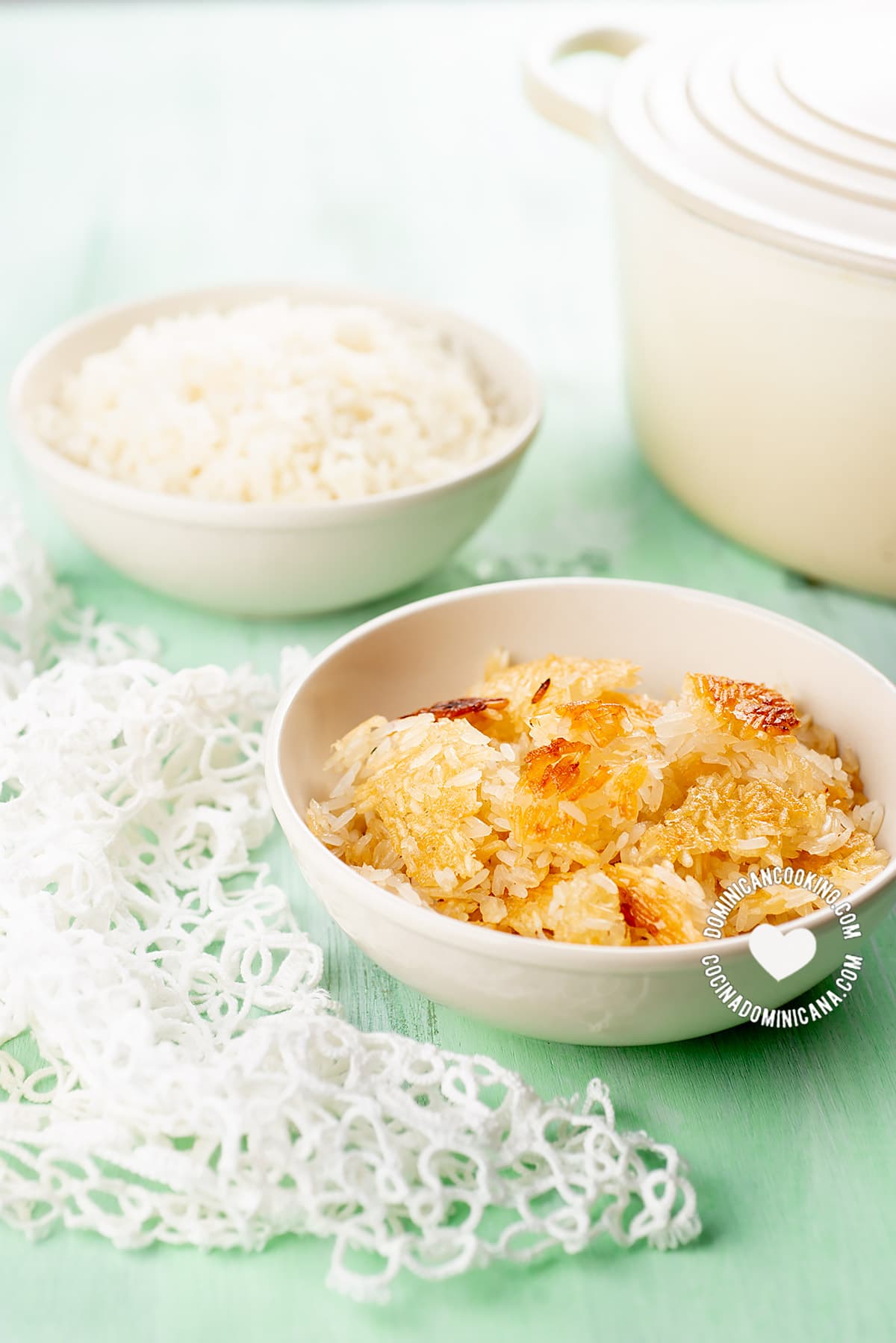
Why we ❤️ it
If you are not Dominican and have never lived in the Dominican Republic, you will probably not understand the passion that Dominicans feel for concón. My suggestion is that you try it, you could be surprised.
What's concón?
Concón is the crust of crispy rice formed at the bottom of the pot when you cook rice Dominican-style. Concón is not a dish in itself, just a byproduct of the cooking method we use to make rice.
The most common one is arroz blanco concón.
The perfect description I ever heard of what concón tastes like: "concón tastes like buttery popcorn", but with a very crispy mouthfeel.
Con-con
Concón is also sometimes spelled con-con, and con con, though these aren't the preferred or correct spellings [1][2].
What makes a concón perfect?
- It is perfectly crispy.
- It is a thin film.
- It is not burnt.
The pot
Use the correct cooking pot. Preferably cast iron or cast aluminum, however, cast aluminum is the standard in the Dominican Republic. You also need the perfect-sized pot; a pot that is too small will tend to burn the rice at the bottom. For a perfect concón the rice, once cooked, should not occupy more than ¾ of the pot (better yet if it is only half).
To start, you need to quick-cure your pot, if your pot is not already seasoned. To do this add vegetable oil (one that is good for frying) and cover the bottom of the pot with it. Add salt. Heat oil until it is hot enough for frying, then add water at room temperature (careful with splatters!). That will seal the pores in the pot, creating a Teflon-like film.
It doesn't matter what you've read out there, practically any pot can make concón, and I've tested that over the years. It all comes to how you cook the rice.
Rice to water ratio
To get a good concón you need to make good rice. It should be firm but chewable. To achieve this you will need to get the right proportion between rice and water. Too much water will ruin your rice, too little and the concón will burn.
In each of our rice recipes, we give you the proportions we use, however over time you may need to adjust the proportions to the type of rice you use, the stove you use, and the pot you have. The perfect rice can rarely be achieved on the first try.
More tips
You will need to stir the rice very often to prevent the rice at the bottom from overcooking and eventually burning.
Every time you stir it, make sure to remove the film that is forming at the bottom, concón has to be produced in the last stage of cooking, if you leave a film of rice to stick to the bottom too early it will be too thick and will burn
When the water has evaporated, and it is time to cover the rice, do so promptly. Pour two tablespoons of oil (optional) and stir again removing the film at the bottom. Cover with a tight-fitting lid.
After 10 to 15 minutes (depending on how much rice you are cooking) repeat the process above, but leave a thin coat of rice at the bottom. Once the rice is ready (firm and chewable) put the rice in the serving bowl immediately. If you leave the rice in the pot for too long, the concón will get soggy.
After you serve the rice wait a couple of minutes for the concón to cool down a bit and settle. Scrape off the bottom with a spoon (a wooden spoon if you do not want to scratch your seasoned cast iron pots) and serve alongside your rice. Don't be mortified by the noise, it’s a big chorus in the Dominican Republic at lunchtime.
Concón elsewhere
Just a final note: Concón is ours, but it's not a unique concept in the least. It's nurungji in Korea, tahdig in Iran, hkaka in Iraq, raspa in Cuba, cocolón in Ecuador, socarrat in Spain, pegao in Puerto Rico, guo ba in China, graten in Haiti, pegado and cucayo in Colombia, kanzo or emo asi in Ghana, tutong in Philippines, xoon in Senegal, koge in Japan, etc.

Recipe
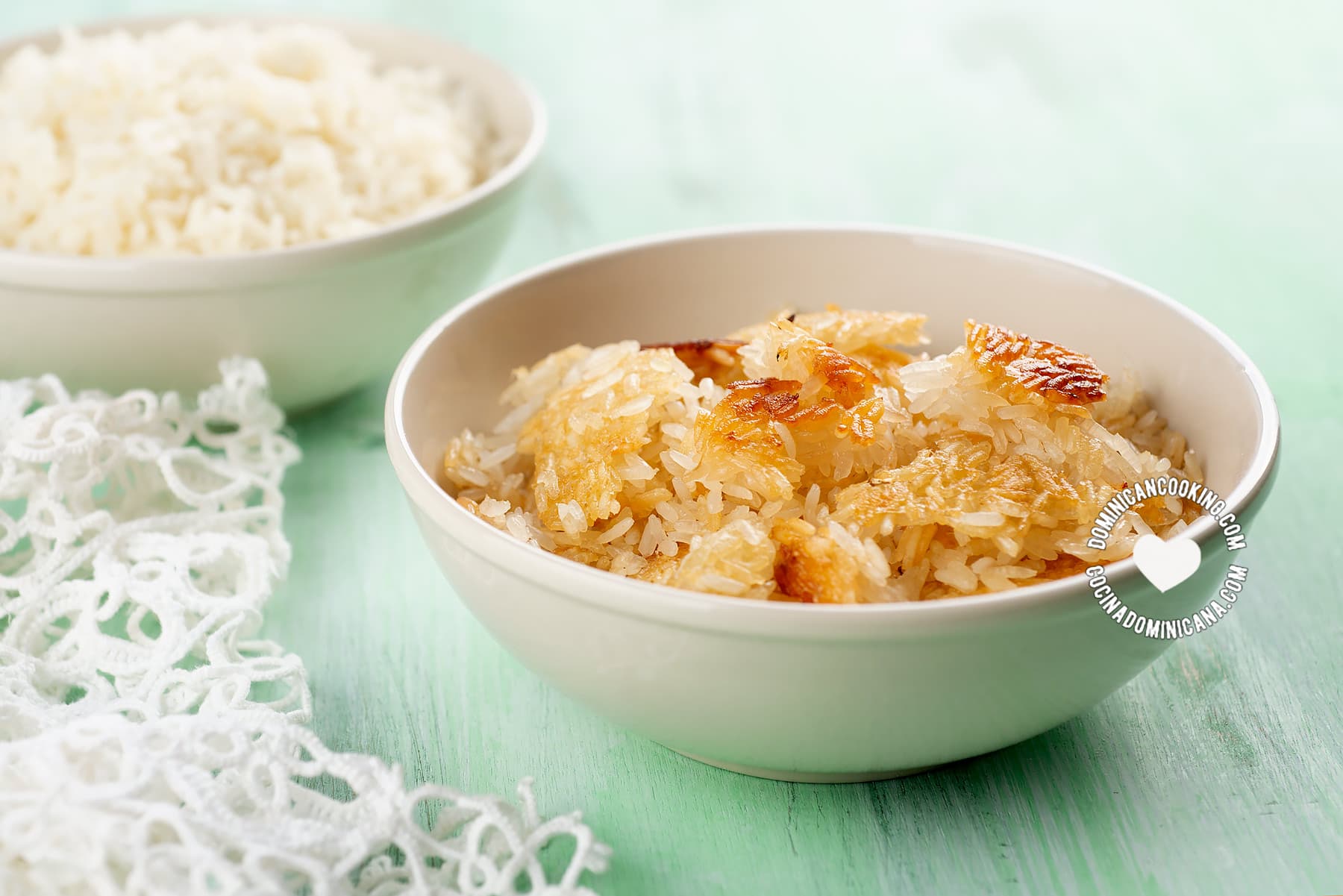
[Recipe + Video] Arroz Blanco to Make Concon
Ingredients
- 5 tablespoons vegetable oil, divided
- 2 teaspoons salt
- 4 cup rice, (long grain, Carolina)
Instructions
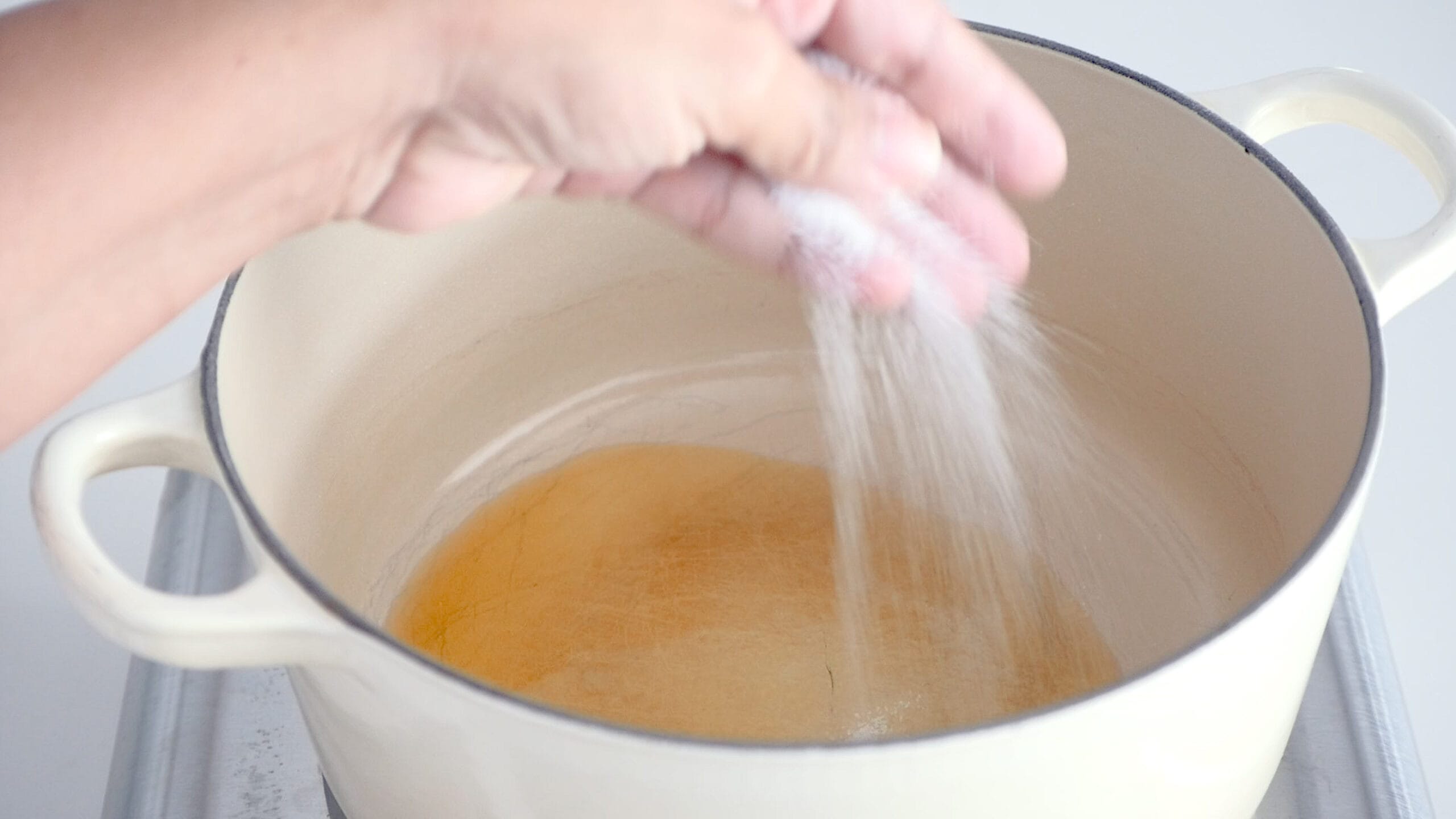 Heating the water: In a medium aluminum pot (Amazon affiliate link) (minimum 2.5 liters [0.5 gal] capacity) heat 3 tablespoons of oil over medium heat, add the salt. When the oil is a little hot add 6 cups [1.4 liters] of water, taking care not to splash.If you use another type of pot, just combine oil, salt, and water and heat over medium heat.
Heating the water: In a medium aluminum pot (Amazon affiliate link) (minimum 2.5 liters [0.5 gal] capacity) heat 3 tablespoons of oil over medium heat, add the salt. When the oil is a little hot add 6 cups [1.4 liters] of water, taking care not to splash.If you use another type of pot, just combine oil, salt, and water and heat over medium heat.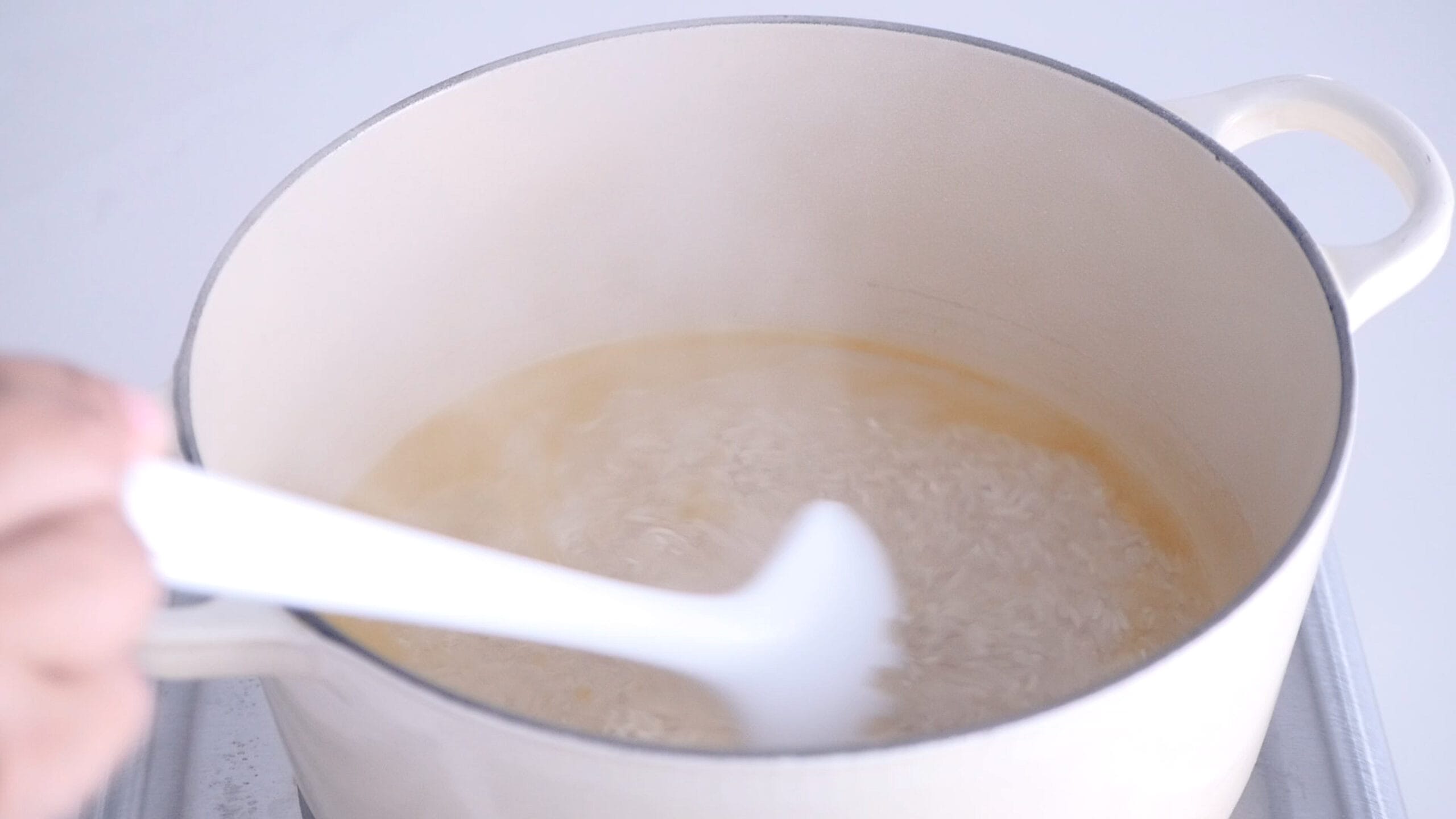 Adding the rice: When the water reaches boiling point, add the rice and cook, stirring regularly to prevent it from sticking to the bottom.
Adding the rice: When the water reaches boiling point, add the rice and cook, stirring regularly to prevent it from sticking to the bottom.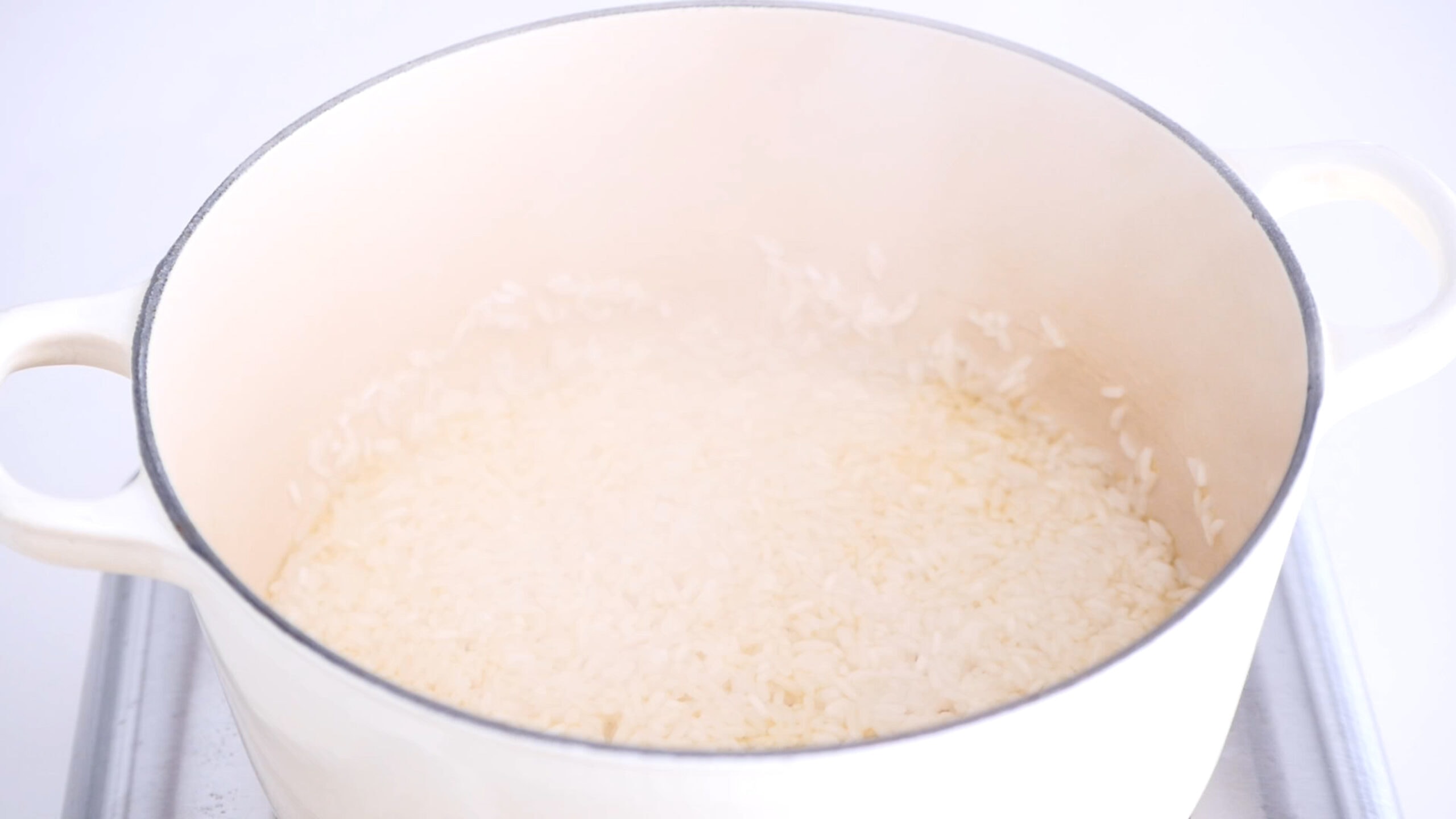 Covering the rice: When the water has evaporated, cover with the lid and cook over very low heat (but enough to generate steam) for 15 minutes.Remove the lid, stir, add the remaining oil and cover again. This oil will help the rice to shine, and the concón will be crispier.In 5 more minutes taste the rice, it should be firm but soft inside. If necessary cover again and leave for another 5 minutes on low heat.
Covering the rice: When the water has evaporated, cover with the lid and cook over very low heat (but enough to generate steam) for 15 minutes.Remove the lid, stir, add the remaining oil and cover again. This oil will help the rice to shine, and the concón will be crispier.In 5 more minutes taste the rice, it should be firm but soft inside. If necessary cover again and leave for another 5 minutes on low heat.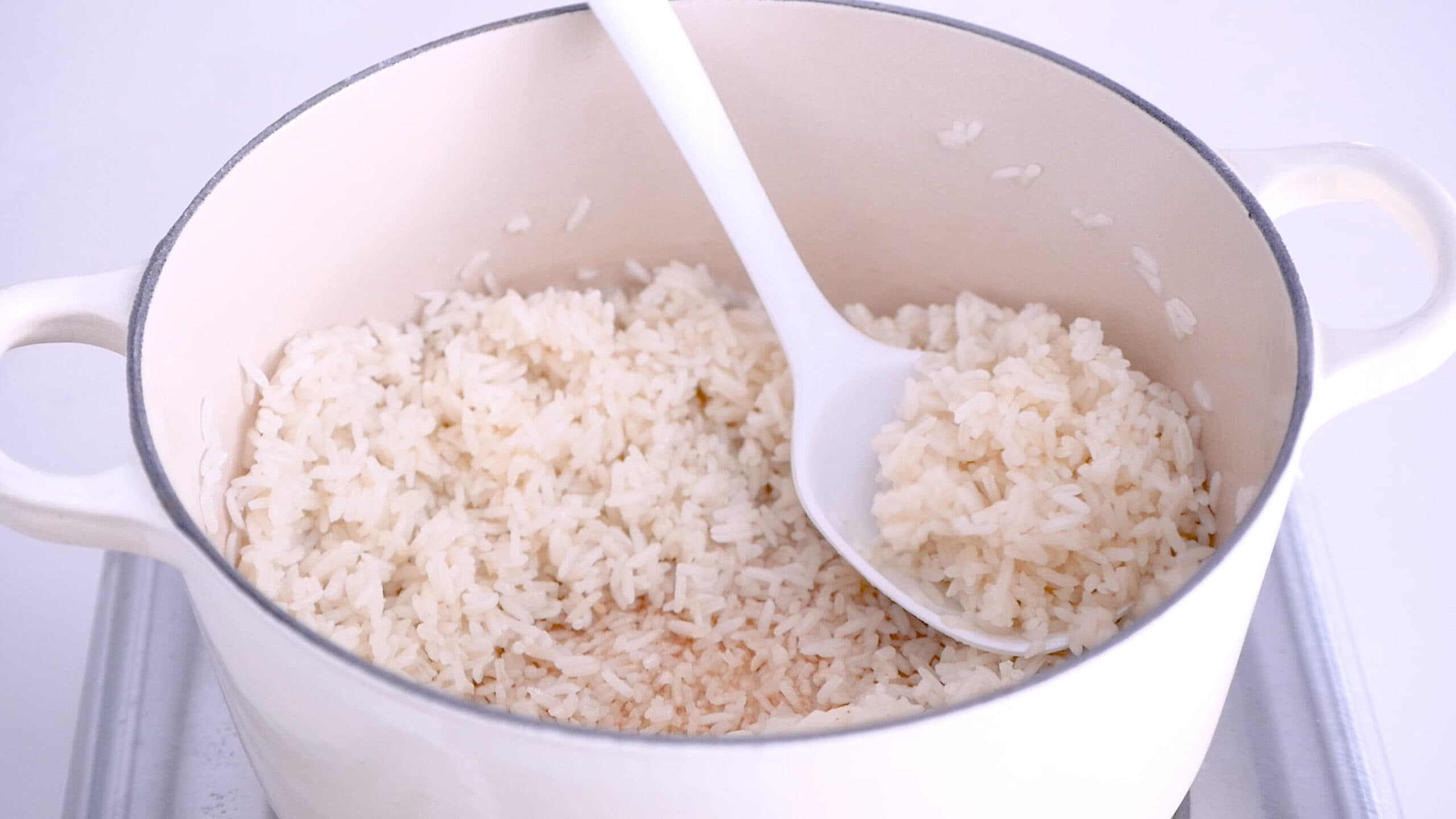 Serving: As soon as the rice is ready, remove it from the pot and place it in a serving dish (this prevents the concón from getting soggy). Scrape off the concón (rice stuck to the bottom) and serve on the side per suggestions above the recipe.
Serving: As soon as the rice is ready, remove it from the pot and place it in a serving dish (this prevents the concón from getting soggy). Scrape off the concón (rice stuck to the bottom) and serve on the side per suggestions above the recipe.
Video
Tips and Notes
Nutrition
Nutritional information is calculated automatically based on ingredients listed. Please consult your doctor if you need precise nutritional information.
Read more
- The Secrets of the Perfect Concón
- Frituras: The complete Guide to Dominican Fritters
- The Complete Collection of Dominican Drinks
- Dominican Rice: Recipes and the Essential Guide to Arroz Dominicano
- The Best Dominican Desserts


